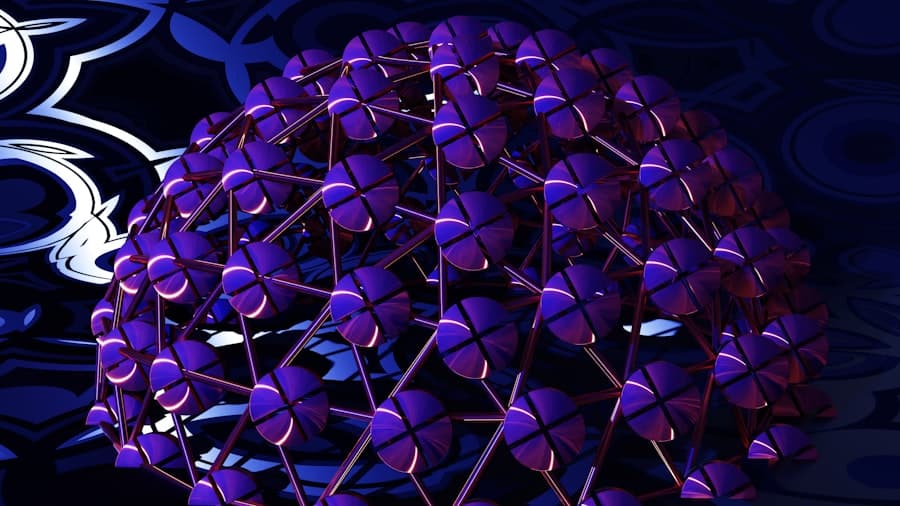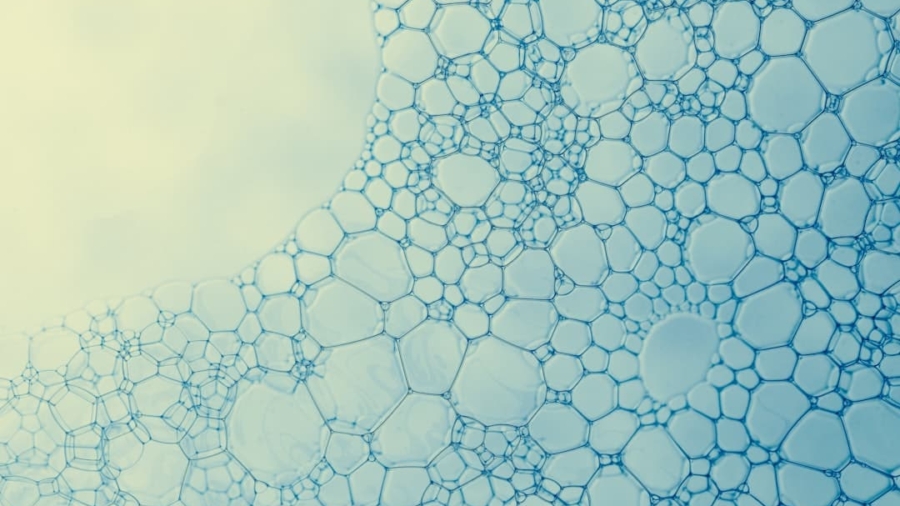Nanotechnology, the manipulation of matter on an atomic or molecular scale, has emerged as a transformative force in various fields, with healthcare being one of the most promising areas of application. By operating at the nanoscale, which typically ranges from 1 to 100 nanometers, researchers can create materials and devices that exhibit unique properties not found in their larger-scale counterparts. This ability to engineer materials at such a small scale opens up new avenues for innovation in diagnostics, therapeutics, and overall patient care.
The integration of nanotechnology into healthcare is not merely a trend; it represents a paradigm shift that has the potential to revolutionize how diseases are diagnosed, treated, and monitored. The significance of nanotechnology in healthcare is underscored by its ability to enhance the efficacy and specificity of medical interventions. For instance, nanoparticles can be designed to target specific cells or tissues, minimizing side effects and improving treatment outcomes.
This targeted approach is particularly crucial in oncology, where traditional therapies often affect healthy cells alongside cancerous ones. As researchers continue to explore the vast potential of nanotechnology, the healthcare landscape is poised for significant advancements that could lead to more personalized and effective medical solutions.
Key Takeaways
- Nanotechnology has revolutionized healthcare by enabling precise diagnosis, targeted drug delivery, advanced imaging, and tissue engineering.
- Nanotech applications in disease diagnosis include biosensors, nanoscale imaging, and early detection of diseases at the molecular level.
- Nanotech plays a crucial role in drug delivery by enhancing drug solubility, bioavailability, and targeted delivery to specific cells or tissues.
- In imaging and monitoring, nanotech enables high-resolution imaging, real-time monitoring of biological processes, and early detection of diseases.
- Nanotech has a significant impact on tissue engineering by creating nanomaterial-based scaffolds, promoting tissue regeneration, and developing personalized implants for patients.
Nanotech Applications in Disease Diagnosis
One of the most impactful applications of nanotechnology in healthcare is its role in disease diagnosis. Traditional diagnostic methods often rely on bulk materials that may lack the sensitivity required for early detection of diseases. In contrast, nanoscale materials can be engineered to interact with biological molecules at a much higher sensitivity, allowing for the detection of diseases at their nascent stages.
For example, gold nanoparticles have been utilized in various biosensors to detect biomarkers associated with diseases such as cancer and cardiovascular conditions. These nanoparticles can amplify signals, making it possible to identify even trace amounts of disease markers in bodily fluids. Moreover, nanotechnology facilitates the development of imaging agents that enhance the visibility of tissues and organs during diagnostic procedures.
Quantum dots, which are semiconductor nanoparticles, have shown promise in providing high-resolution images due to their unique optical properties. These dots can be conjugated with antibodies that specifically bind to cancer cells, allowing for precise imaging of tumors. This capability not only aids in accurate diagnosis but also assists in monitoring disease progression and treatment response over time.
The integration of nanotech into diagnostic tools represents a significant leap forward, enabling earlier intervention and better patient outcomes.
Nanotech’s Role in Drug Delivery

The field of drug delivery has been significantly transformed by advancements in nanotechnology. Conventional drug delivery systems often face challenges such as poor solubility, rapid clearance from the body, and non-specific distribution, which can limit therapeutic efficacy. Nanoparticles offer a solution to these issues by providing a means to encapsulate drugs and deliver them directly to target sites within the body.
Liposomes, dendrimers, and polymeric nanoparticles are just a few examples of nanocarriers that can improve drug solubility and stability while controlling release rates. One notable application of nanotechnology in drug delivery is in cancer therapy. Chemotherapeutic agents are often toxic not only to cancer cells but also to healthy tissues, leading to severe side effects.
By utilizing nanoparticles that can specifically target tumor cells, researchers have developed systems that release drugs only when they reach the intended site. For instance, a study demonstrated the use of folate-conjugated nanoparticles that selectively delivered doxorubicin to cancer cells expressing folate receptors. This targeted approach not only enhanced the therapeutic effect but also reduced systemic toxicity, showcasing the potential of nanotechnology to improve patient quality of life during treatment.
Nanotech in Imaging and Monitoring
Nanotechnology has also made significant strides in the realm of imaging and monitoring within healthcare. Traditional imaging techniques such as MRI and CT scans provide valuable information about anatomical structures but often lack the ability to visualize cellular or molecular processes in real-time. Nanoparticles can bridge this gap by serving as contrast agents that enhance imaging modalities.
For example, superparamagnetic iron oxide nanoparticles have been employed as MRI contrast agents due to their ability to alter magnetic fields and improve image clarity. In addition to enhancing imaging capabilities, nanotechnology plays a crucial role in real-time monitoring of physiological parameters. Nanosensors can be designed to detect specific biomolecules or changes in environmental conditions within the body.
For instance, glucose sensors based on nanoscale materials have been developed for continuous monitoring of blood sugar levels in diabetic patients. These sensors provide timely data that can inform treatment decisions and improve disease management. The integration of nanotech into imaging and monitoring not only enhances diagnostic accuracy but also empowers patients with more information about their health status.
Nanotech’s Impact on Tissue Engineering
Tissue engineering is another area where nanotechnology is making significant contributions. The ability to create scaffolds at the nanoscale allows for better mimicry of the natural extracellular matrix, which is crucial for cell adhesion, growth, and differentiation. Nanofibers made from biodegradable polymers can be engineered to provide a supportive environment for tissue regeneration.
For example, electrospun nanofibers have been used to create scaffolds for skin regeneration, promoting cell proliferation and migration while facilitating nutrient exchange. Furthermore, nanotechnology enables the incorporation of bioactive molecules into scaffolds to enhance tissue healing processes. Growth factors or signaling molecules can be loaded into nanoparticles that are embedded within the scaffold material.
This controlled release system ensures that these bioactive agents are delivered at optimal concentrations over time, promoting tissue repair and regeneration more effectively than traditional methods. The synergy between nanotechnology and tissue engineering holds great promise for developing advanced therapies for conditions such as burns, wounds, and degenerative diseases.
Nanotech in Targeted Therapies

Targeted therapies represent a significant advancement in the treatment of various diseases, particularly cancer. Nanotechnology enhances the precision of these therapies by enabling drugs to be delivered directly to diseased cells while sparing healthy tissues. This targeted approach minimizes side effects and maximizes therapeutic efficacy.
One prominent example is the use of antibody-drug conjugates (ADCs), which combine monoclonal antibodies with cytotoxic drugs linked through a nanoparticle carrier. The antibody component selectively binds to specific antigens on cancer cells, ensuring that the cytotoxic agent is released only where it is needed. Another innovative application involves using nanoparticles as carriers for RNA-based therapies such as small interfering RNA (siRNA) or messenger RNA (mRNA).
These therapies hold great potential for silencing genes responsible for disease progression or expressing therapeutic proteins within target cells. However, delivering RNA molecules effectively remains a challenge due to their instability and susceptibility to degradation.
This capability has led to promising results in preclinical studies targeting various cancers and genetic disorders.
Challenges and Ethical Considerations in Nanotech Healthcare Solutions
Despite the immense potential of nanotechnology in healthcare, several challenges and ethical considerations must be addressed before widespread implementation can occur. One primary concern is the safety and biocompatibility of nanomaterials used in medical applications. The unique properties of nanoparticles may lead to unforeseen interactions within biological systems, raising questions about their long-term effects on human health and the environment.
Regulatory agencies are tasked with establishing guidelines for evaluating the safety of nanomaterials, but this remains an evolving area requiring ongoing research. Ethical considerations also arise regarding access to nanotechnology-based treatments and potential disparities in healthcare delivery. As these advanced therapies become available, there is a risk that they may only be accessible to certain populations due to cost or availability issues.
Ensuring equitable access to innovative healthcare solutions is paramount to prevent widening health disparities among different socioeconomic groups. Additionally, public perception and understanding of nanotechnology play a crucial role in its acceptance; thus, transparent communication about risks and benefits is essential.
Future Prospects of Nanotech in Healthcare
Looking ahead, the future prospects of nanotechnology in healthcare are both exciting and promising. As research continues to advance our understanding of nanoscale materials and their interactions with biological systems, we can expect even more innovative applications to emerge. Personalized medicine stands out as a key area where nanotechnology could make significant contributions by enabling tailored treatments based on individual genetic profiles or disease characteristics.
Moreover, advancements in artificial intelligence (AI) and machine learning could further enhance the capabilities of nanotechnology in healthcare by enabling more precise diagnostics and treatment planning. Integrating AI with nanoscale devices could lead to smarter biosensors capable of real-time data analysis and decision-making support for clinicians. The convergence of these technologies holds great potential for improving patient outcomes and transforming healthcare delivery.
In conclusion, while challenges remain regarding safety, ethics, and accessibility, the ongoing research and development efforts in nanotechnology promise a future where healthcare is more effective, personalized, and equitable for all patients. The journey toward realizing this potential will require collaboration among scientists, clinicians, policymakers, and society at large to ensure that the benefits of nanotechnology are harnessed responsibly and ethically.
In addition to exploring the role of nanotechnology in healthcare solutions, readers may find it beneficial to delve into the advancements in software testing that can enhance the development of medical technologies. For a comprehensive overview, check out this article on the best software testing books, which provides valuable insights into ensuring the reliability and effectiveness of healthcare applications that utilize nanotech innovations.
FAQs
What is nanotechnology?
Nanotechnology is the manipulation of matter on an atomic and molecular scale. It involves the creation and use of materials, devices, and systems through the control of matter at the nanometer scale.
How is nanotechnology used in healthcare?
Nanotechnology has various applications in healthcare, including drug delivery, imaging, diagnostics, and regenerative medicine. It allows for targeted delivery of drugs to specific cells or tissues, as well as the development of more sensitive diagnostic tools.
What are the benefits of nanotechnology in healthcare?
Nanotechnology has the potential to revolutionize healthcare by improving the effectiveness of treatments, reducing side effects, and enabling early detection of diseases. It also has the potential to create new treatment options for conditions that are currently difficult to treat.
What are some examples of nanotechnology in healthcare?
Examples of nanotechnology in healthcare include nanoparticle-based drug delivery systems, nanoscale imaging agents for improved diagnostics, and nanomaterials for tissue engineering and regenerative medicine.
Are there any concerns about the use of nanotechnology in healthcare?
Some concerns about the use of nanotechnology in healthcare include potential toxicity of nanomaterials, environmental impact, and ethical considerations related to the use of nanotechnology in human enhancement. Research is ongoing to address these concerns and ensure the safe and responsible use of nanotechnology in healthcare.

